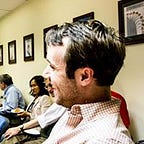San Francisco Is Not Running Out of Kids
I read an article in the New York Times this morning arguing that San Francisco is experiencing some kind of dramatic decline in its number of children. This was interesting to me. But what was more interesting was that they didn’t cite any data about the actual age composition of San Francisco’s population compared to the US on the whole. Weird.
Let’s look at the data.
San Francisco’s Child Population Is Stable or Rising
The chart below shows a stable-to-slightly-rising population of kids in San Francisco proper. The drop in 2010 I believe reflects revisions based on the 2010 Census, but I’m not 100% sure. Whatever the case, the absolute number of kids continues to rise., as one might expect given that San Francisco’s total population is also expected to rise.
Kids Are A Stable Share of San Francisco’s Population
They’re a Shrinking Share of the Nation’s Population
The above chart shows the % of San Francisco’s population made up of minors, as well as the same percentage for national population.
As you can see, SF’s kid-share declined in the 70s, 80s, and 90s, then again in the 2000s apparently, but has been about stable since 2010. There’s no imminent reason to think the kid-share is in decline.
Meanwhile, nationally, the kid-share most definitely is in decline! Kids make up a smaller and smaller share of the national population, a natural component of population aging.
Crucially, San Francisco has always had a dramatically lower kid-share than the nation on the whole! Kid-friendly San Francisco was never a reality and probably never will be. It has always been a child-deficit region.
San Francisco’s Child Deficit Is Stable or Shrinking
The chart below shows the ratio of the nation-less-SF kid-share to the SF-kid-share:
As you can see, San Francisco has consistently been around 55–60% of the national kid-share for quite a while, and recent years have, if anything, seen a trend upwards.
We can also look at the absolute gap instead of a ratio. Just click over to “Absolute Gap” instead of “Ratio” in the chart.
By this metric, the kid-share gap between SF and the nation is actually narrowing, and has been for a while. San Francisco’s child-density is looking more and more normal, though, granted, this is more because national kid-shares have fallen than because SF has risen.
What we’re actually seeing is the San-Franciscization of American demographics. A city that has always had smaller families, later childbearing, less marriage, and hence fewer children is starting to look more and more like the nation on the whole.
PS- Yes, I’m burning with self-loathing for having done two California-centric posts back-to-back, but, look, other news fronts have been pretty quiet as far as migration is concerned!
Check out my Podcast about the history of American migration.
If you like this post and want to see more research like it, I’d love for you to share it on Twitter or Facebook. Or, just as valuable for me, you can click the recommend button at the bottom of the page. Thanks!
Follow me on Twitter to keep up with what I’m writing and reading. Follow my Medium Collection at In a State of Migration if you want updates when I write new posts. And if you’re writing about migration too, feel free to submit a post to the collection!
I’m a native of Wilmore, Kentucky, a graduate of Transylvania University, and also the George Washington University’s Elliott School. My real job is as an economist at USDA’s Foreign Agricultural Service, where I analyze and forecast cotton market conditions. I’m married to a kickass Kentucky woman named Ruth.
My posts are not endorsed by and do not in any way represent the opinions of the United States government or any branch, department, agency, or division of it. My writing represents exclusively my own opinions. I did not receive any financial support or remuneration from any party for this research.
